You may get the “Access denied” error when you access certain folders and files.
This is a pretty common Windows error. It is also relatively easier to solve.
If you are getting similar error and looking for a solution, this post is for you.
Why do you get “Access denied” error?
You can get this error both as a standard user or an administrator user.
One of the main reasons behind the error is lack of access permissions. That is, when you try to access a file that you’re not authorised to, you get this error.
If the files or folders that you’re trying to open are corrupt, then also you’ll get this error.
Some users who have reported this error had recently upgraded to Windows 8 or higher version.
Following the upgrade, they no longer had access to certain files and folders. As a result, they received the error when they tried to open them.
How to fix the “Access denied” error?
It might be an irritating issue for you as you are not able to access important data stored in the folders.
If you are getting this error after upgrading Windows, the solution to problem is to restore the ownership of the files and folders.
Here we have discussed three different solutions to fix the “Access denied” error.
Solution One- Change or Restore Ownership of the files and folder
If you have not upgrade Windows and still getting this error, it is more likely the error is because you don’t have appropriate permissions to access the files and folders.
To resolve this error, you need to change ownership of the files and folder.
(Note – the steps to change ownership of the files and folders are different for Windows 7 and Windows 10/8. Kindly follow the steps as per the windows version installed in your computer)
You should be logged in as administrator to perform the troubleshooting steps given below.
Remember, only the administrator account has the rights to make changes to the access permissions for the files and folder.
If you don’t know whether the account you are logged in currently has admin rights, follow the steps to find the user account type.
- For Windows 10- Click Start and type account in the Cortana search box
- For Windows 7 – Click Start button and type account in search box
- Click User account or Manage your account in the list of results
- You will see a window pop-up with the current user name details. If you see “Administrator” label below the user name, the account has admin rights and you can go ahead and perform the steps to change ownership of the files.
- If you are logged in a guest or Standard User, log out of the account and log in as administrator.
Steps to Change /Restore Ownership of the files and folders in Windows 10/8
- Right-click on problematic folder or file and click Properties
- In the Properties window, go to Security tab
- Click Advanced button
- In the Advanced Security Settings window, click Change
- In the Select use window, go to the box titled- Enter the object name to select and type the username of currently logged in user. You don’t need to type complete name of the user, Windows will complete the username for you
- Click Check Names
- In the Advanced Security settings window, you need to check the box “Replace all child object permission entries with inheritable permission entries from this object”. Do this only if you want to take ownership of the folder, its subfolders, and files in it.
- Click OK
- Now go to Folder properties dialog box and click OK
- Close all dialog boxes
Try opening the file or folder which gave out “Access Denied” error. If the error is not resolved, move to next solution.
Steps to Change /Restore Ownership of the files and folders in Windows for Windows 7
- Right-click on problematic file or folder and select properties
- In the folder/file properties window, go to security tab
- Click advanced to access advanced security options of the folder
- In the advances security settings window, go to owner tab
- Click Edit
- In the next window, click Other users and groups
- In the select user or group window, go to box named enter the object name to select
- Type the current username. You don’t need to type full username; windows will complete it for you.
- Click Check Names
- Click ok
- In the advanced security settings window, check the box- replace owner on subcontainers and objects
- Click ok
- Now go to file properties dialog box, click ok
Now try opening the folder and file and see if the “access denied” error is displayed. If the error persists, move to next solution.
Solution Two- Get Appropriate Permissions
If you have upgraded Windows, it is more likely some permission for files and folders may have changed.
In that case, you need to get appropriate permissions in order to access the problematic files and folders. Here are the steps to follow.
(Note- In order to grant yourself appropriate permissions, you need to be logged in as administrator)
- Right-click on folder or file for which you want appropriate permissions
- Click Properties
- In the Properties window, go to Security tab
- Click Edit button
- In the Permissions for the folder dialog, select your username in “Group or users names” box
- Under Permissions for folder box, place a tick in Allow box for Full control
- Click OK to close the Permissions dialog box
- Now go to file/folder properties dialog box and click OK
- Close all dialog box
Now check whether you are able to access the files and folders that weren’t earlier accessible. If the problematic persists, go to next solution.
Solution Three – Recover your data
If the above two solutions have not worked for you, there is a possibility the folders and files you are trying to access are corrupt. In most cases, these files cannot be recovered unless you have a backup copy.
If you have made a backup, you can delete the problematic files and folders and restore the files/folders from the backup.

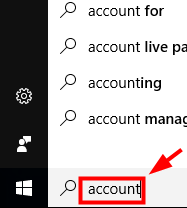
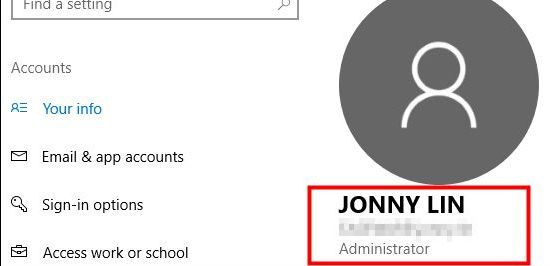
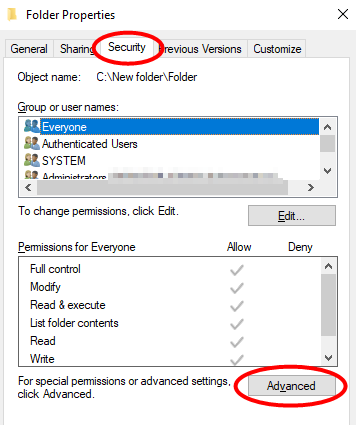
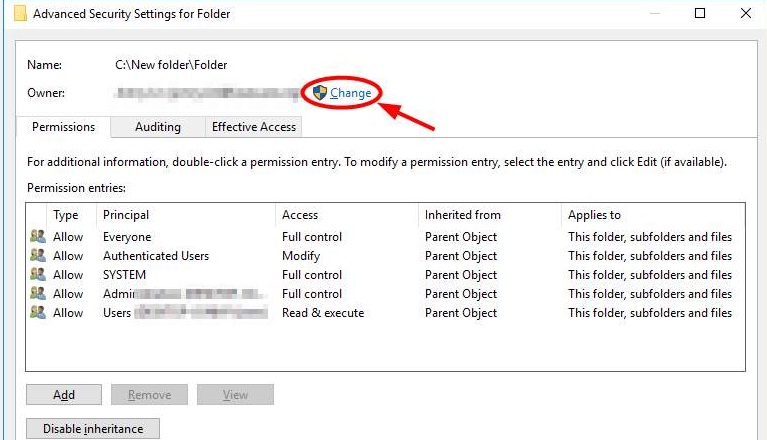
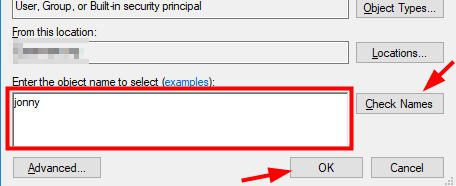
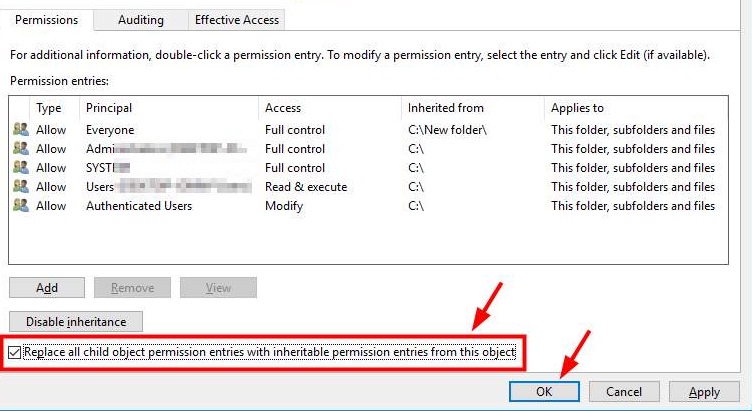
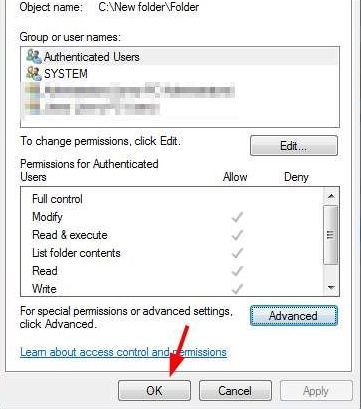
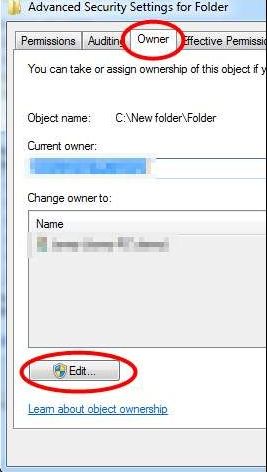
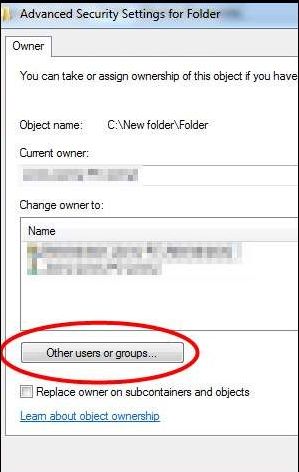
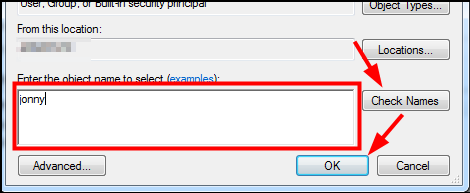
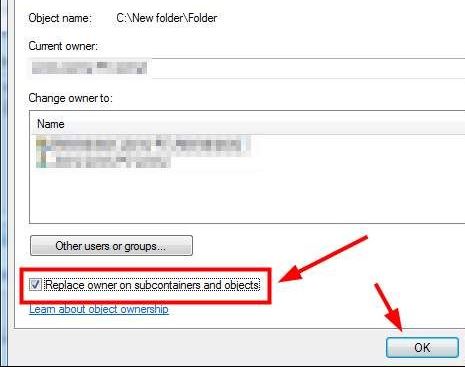
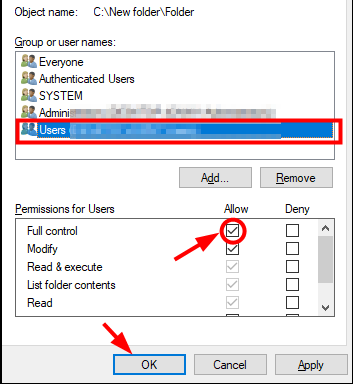
Leave a Reply